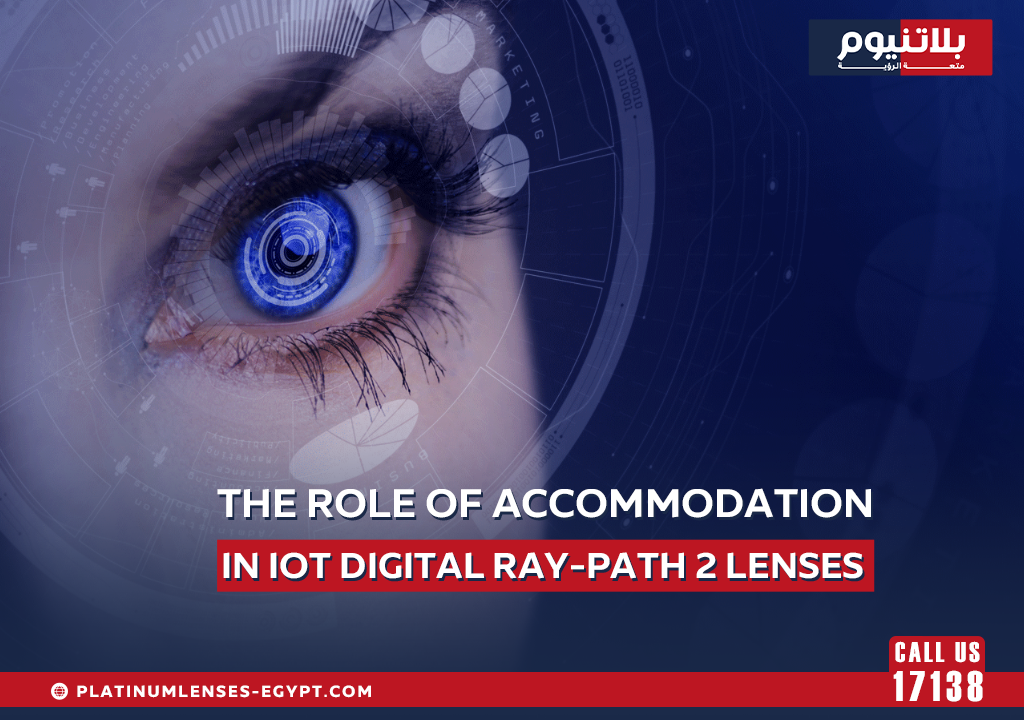Accommodation is a crucial function of the human visual system that allows the eyes to focus on objects at different distances. This ability enables seamless transitions between near, intermediate, and far vision. However, as we age, the eye’s natural accommodation ability declines, leading to conditions such as presbyopia, where near vision becomes increasingly difficult.
IOT Digital Ray-Path 2 is an advanced lens technology designed to optimize vision by considering the wearer’s accommodation ability. Unlike conventional progressive lenses, which may not fully account for individual visual habits and accommodation needs, Digital Ray-Path 2 utilizes cutting-edge algorithms to enhance clarity, minimize distortions, and provide a more natural visual experience.
By understanding the relationship between accommodation and lens performance, we can appreciate how IOT Digital Ray-Path 2 lenses offer significant advantages for wearers, particularly those requiring progressive lenses. This article explores the role of accommodation in vision and how IOT Digital Ray-Path 2 technology improves lens performance to create a seamless, comfortable viewing experience.
Understanding Accommodation in Human Vision
Accommodation refers to the eye’s ability to change focus from distant to near objects by adjusting the shape of the crystalline lens. This process is controlled by the ciliary muscles, which contract to thicken the lens for near vision and relax to flatten it for distance vision. This dynamic adjustment ensures sharp, clear vision across different distances.
The Role of the Ciliary Muscles and Crystalline Lens
The ciliary muscles play a vital role in accommodation. When looking at nearby objects, these muscles contract, causing the lens to become more convex, increasing its refractive power. Conversely, when focusing on distant objects, the muscles relax, allowing the lens to return to its thinner, flatter shape. This constant adjustment allows the eye to shift focus effortlessly in younger individuals.
Age-Related Changes in Accommodation (Presbyopia)
As people age, typically after the age of 40, the crystalline lens loses its flexibility, reducing the eye’s ability to accommodate. This condition, known as presbyopia, makes it difficult to focus on close objects, leading to the need for reading glasses or progressive lenses.
Traditional progressive lenses provide a solution, but they often require adaptation due to distortions and unnatural transitions between vision zones. This is where IOT Digital Ray-Path 2 technology enhances the user experience by offering a more personalized and adaptive solution.
The Science Behind IOT Digital Ray-Path 2 Lenses
IOT Digital Ray-Path 2 is an innovative lens technology that enhances progressive lens design by incorporating real-time accommodation data into the manufacturing process. It takes into account how the wearer’s eyes naturally adjust focus, reducing unwanted aberrations and improving overall visual clarity.
How It Differs from Conventional Progressive Lenses
Traditional progressive lenses provide a gradual transition between near, intermediate, and distance vision zones, but they often introduce distortions in peripheral vision. These distortions occur because conventional lens designs do not fully consider how individual eyes accommodate at different distances. Digital Ray-Path 2, on the other hand, dynamically adapts to the user’s accommodation ability, reducing oblique aberrations and optimizing clarity across all vision zones.
The Incorporation of Artificial Intelligence and Wearer’s Prescription Data
IOT Digital Ray-Path 2 technology employs advanced algorithms that analyze the wearer’s prescription, visual habits, and accommodation needs. By integrating artificial intelligence, the lens design is tailored to the individual’s specific viewing patterns, ensuring a smoother and more natural visual experience. This results in:
- Sharper vision across all distances
- Minimal peripheral distortions
- Faster adaptation to new lenses
- Enhanced visual comfort for prolonged use
By leveraging accommodation data in the lens design, IOT Digital Ray-Path 2 lenses provide a superior solution for individuals seeking clarity, comfort, and a natural transition between vision zones.
How Accommodation is Considered in Digital Ray-Path 2 Lenses
Accommodation is a key factor in designing lenses that provide a comfortable and seamless visual experience. Traditional progressive lenses often follow a one-size-fits-all approach, which may not fully accommodate an individual’s specific vision habits. In contrast, IOT Digital Ray-Path 2 technology personalizes lens design by analyzing how each wearer’s eyes naturally accommodate across different distances. This allows for a customized solution that enhances clarity and reduces distortions.
How Digital Ray-Path 2 Compensates for Accommodative Demands
The Digital Ray-Path 2 technology adapts to the user’s visual behavior by optimizing the lens for near, intermediate, and distance vision. By incorporating accommodation data into the lens calculations, it provides:
- Near Vision Optimization: The design minimizes distortions and ensures that close-up tasks like reading or using a smartphone are comfortable and strain-free.
- Intermediate Vision Enhancement: The lens ensures smooth transitions when shifting focus between near and mid-range objects, such as working on a computer.
- Distance Vision Clarity: By reducing peripheral aberrations, Digital Ray-Path 2 maintains sharp and stable distance vision, making activities like driving more comfortable.
The Benefits of Reducing Oblique Aberrations
One of the standout advantages of Digital Ray-Path 2 is its ability to minimize oblique aberrations—distortions that occur when viewing through the peripheral areas of the lens. By compensating for these aberrations, wearers experience:
- Improved edge-to-edge clarity
- A more natural field of view
- Enhanced depth perception
- Reduced visual fatigue, even after extended use
Key Benefits of Digital Ray-Path 2 for Wearers
By aligning the lens design with the wearer’s accommodative ability, Digital Ray-Path 2 reduces unnecessary eye strain. This is particularly beneficial for individuals who spend long hours in front of screens or frequently switch focus between different distances.
Smoother Transition Between Vision Zones
Unlike conventional progressive lenses that often create abrupt changes between near, intermediate, and distance zones, Digital Ray-Path 2 provides a smooth transition. This reduces the “swim effect” and helps users adapt more quickly to their new lenses.
Greater Adaptability and a Natural Vision Experience
For presbyopic patients who struggle with adapting to progressive lenses, Digital Ray-Path 2 offers a more intuitive experience. By customizing the lens to match the user’s unique visual behavior, the adaptation period is significantly shortened, leading to a more seamless and enjoyable vision correction solution.
Customization Based on Lifestyle and Visual Needs
Each person’s visual habits differ based on their lifestyle. Digital Ray-Path 2 takes this into account by providing different customization options:
- Office Workers: Optimized intermediate and near vision for prolonged screen use.
- Drivers: Enhanced distance vision clarity and minimized distortions in peripheral areas.
- Readers: A focus on near vision precision for reading-intensive tasks.
- Active Individuals: A balanced design that supports dynamic and outdoor activities.
Comparing Digital Ray-Path 2 with Traditional Progressive Lenses
| Feature | Traditional Progressive Lenses | Digital Ray-Path 2 Lenses |
|---|---|---|
| Optical Performance | Uses a generic design, leading to potential distortions | Customized for each wearer, providing sharper focus |
| Accommodation Response | Does not account for individual accommodation abilities | Aligns naturally with the eye’s accommodation for enhanced clarity |
| Peripheral Distortions | Higher risk of blurred vision and discomfort | Reduces oblique aberrations for clearer vision |
| Adaptation Period | Longer adaptation time due to unnatural vision zones | Minimal adaptation period with seamless transitions |
| Visual Fatigue | Higher tendency for eye strain and discomfort | Reduces visual stress and enhances comfort |
| Customization | One-size-fits-all approach | Tailored to lifestyle and vision needs |
| Overall Experience | May cause disorientation and difficulty shifting focus | Provides a natural viewing experience with better image stability |
By considering the role of accommodation in vision, Digital Ray-Path 2 represents a significant leap forward in lens technology. It ensures that wearers experience the most comfortable, clear, and personalized vision correction possible.

